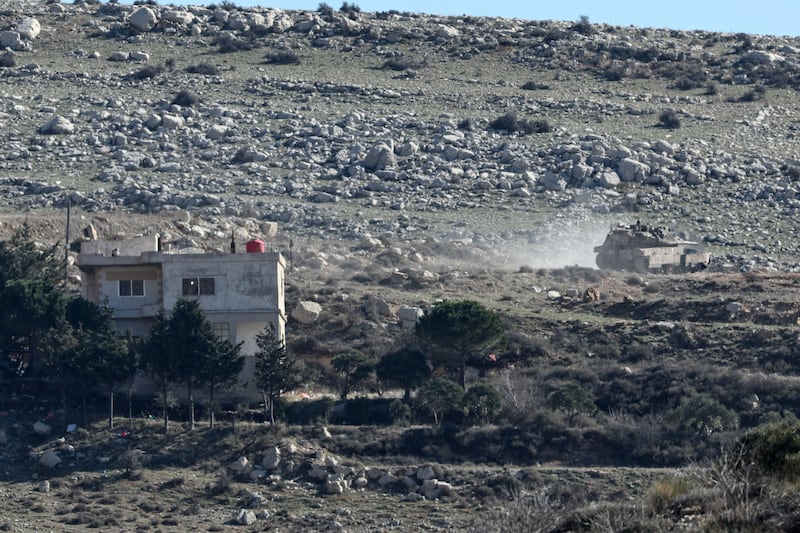Israel agreed on Sunday to double its population on the occupied Golan Heights while saying threats from Syria remained despite the moderate tone of rebel leaders who ousted President Bashar al-Assad a week ago.
“Strengthening the Golan is strengthening the state of Israel, and it is especially important at this time. We will continue to hold onto it, cause it to blossom, and settle in it,” Israeli prime minister Binyamin Netanyahu said in a statement.
Israel captured most of the strategic plateau from Syria in the 1967 Six-Day War, annexing it in 1981.
In 2019 then-US president Donald Trump declared support for Israeli sovereignty over the Golan, but the annexation has not been recognised by most countries. Syria demands Israel withdraw but Israel refuses, citing security concerns. Various peace efforts have failed.
‘It was a massacre’: At least 51 Palestinians killed in Gaza while waiting for food trucks, say medics
People Before Profit TD Paul Murphy freed again by Egyptian authorities
Amount of aid getting into Gaza ‘minuscule’, Doctors Without Borders chief says
Israel and Iran continue to exchange attacks as death tolls and calls for de-escalation grow
“The immediate risks to the country have not disappeared and the latest developments in Syria increase the strength of the threat - despite the moderate image that the rebel leaders claim to present,” defence minister Israel Katz told officials examining Israel’s defence budget, according to a statement.
Netanyahu’s office said the government unanimously approved a more than 40-million-shekel (€10.5 million) plan to encourage demographic growth in the Golan.
It said Netanyahu submitted the plan to the government “in light of the war and the new front facing Syria, and out of a desire to double the population of the Golan”.
Some 31,000 Israelis have settled there, said analyst Avraham Levine of the Alma Research and Education Center, which specialises in Israel’s security challenges on its northern border. Many work in farming, including vineyards, and tourism. The Golan is home to 24,000 Druze, an Arab minority who practice an offshoot of Islam, Levine said. Most identify as Syrian.
Syria’s de facto leader, Ahmad al-Sharaa, said on Saturday that Israel was using pretexts to justify its attacks on Syria, but that he was not interested in engaging in new conflicts as his country focuses on rebuilding.
Sharaa - better known as Abu Mohammed al-Golani - leads the Islamist Hayat Tahrir al-Sham (HTS) group that swept Assad from power last Sunday, ending the family’s five-decade iron-fisted rule.
Since then Israel has moved into a demilitarised zone inside Syria that was created after the 1973 Arab-Israeli war, including the Syrian side of the strategic Mount Hermon that overlooks Damascus, where its forces took over an abandoned Syrian military post.
Israel, which has said it does not intend to stay there and calls the incursion into Syrian territory a limited and temporary measure to ensure border security, has also carried out hundreds of strikes on Syria’s strategic weapons stockpiles.
It has said it is destroying strategic weapons and military infrastructure to prevent them from being used by rebel groups that drove Assad from power, some of which grew from movements linked to al-Qaeda and Islamic State.
Several Arab countries, including Saudi Arabia, the United Arab Emirates and Jordan, have condemned what they called Israel’s seizure of a buffer zone in the Golan Heights.

Over the weekend, Israeli air raids hit bases, heavy weapons and sites associated with the former Assad regime’s missile and chemical weapons programme, and destroyed Syria’s small naval force in the port of Latakia.
The continuing strikes have prompted mounting concern among diplomats and international officials over what they fear may be an open-ended new occupation of Syrian territory.
The United Nations (UN) has called on Israel to withdraw from the buffer zone, which sits between Syria and the Israeli-occupied Golan Heights.
The UN secretary general, António Guterres, said he was “deeply concerned by the recent and extensive violations of Syria’s sovereignty and territorial integrity”.
France, Germany and Spain have also called on Israel to withdraw from the demilitarised zone.
The UN has said Israel is in violation of a 1974 disengagement agreement between Israel and Syria that established the buffer zone. Israel has said the 1974 disengagement agreement “collapsed” with the fall of the Assad regime government. –Guardian/Reuters















